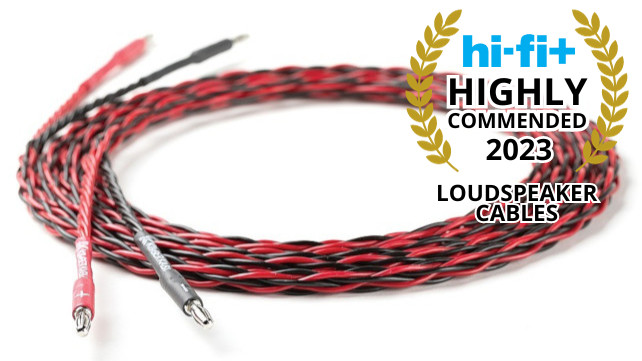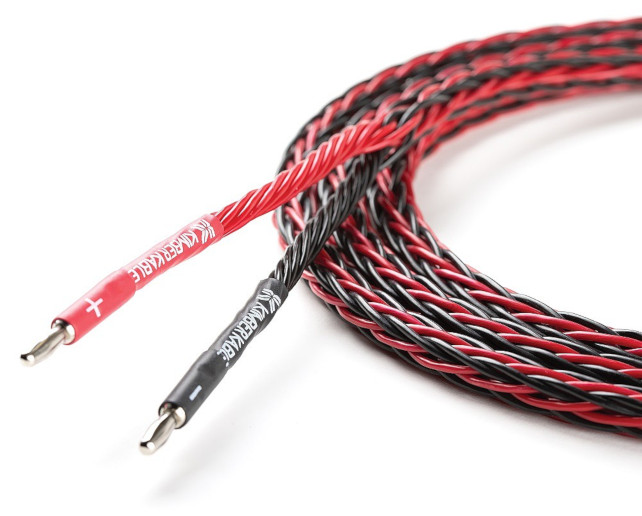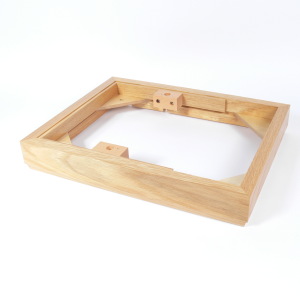Hi-Fi+ Awards: 4PR & 8PR Highly Recommended
Thursday, 14th December 2023
The cable that started it all for Kimber, back in 1979, was their 4PR speaker cable, which set the standard, and fundamental design geometry, for everything that was to follow.

That ‘entry-level’ cable, and its beefier sibling 8PR, has remained pretty well unaltered as a stalwart of the range ever since. However, over the years, what is perhaps considered a ‘base’ level Hi-Fi system has changed somewhat.
Reflecting this, Kimber took the decision in 2022 to upgrade their legendary series with the introduction of the superior VariStrand™ conductors to both PR models (find out more about VariStrand).
This is a tough market as “they are only a few notches up from giveaway speaker cables used to help sweeten the deal in starter systems… so they need to impress”, Alan argues, adding “and impress they do”.
Beginning with 4PR (four positive and four negative conductors per channel – hence the name) he notes that “there’s a lot of energy and dynamism to the 4PR sound, with extremely good bass”, and continues to suggest that...
So far, so (very) good. But given that 8PR only differs in the number of conductors employed – 16 rather than eight per channel and everything else remains the same - is the extra investment worth it? Before we answer that, it’s useful to clarify the significance of those additional conductors.

There are two key effects that ‘more of the same cable’ has on its performance. First, those additional twists create a more complex weave. Given it’s the famous Kimber woven geometry that acts as a filter for RF interference, the more complex that weave, the better the filter. So, in principle, doubling those conductors can have a marked effect on performance.
Secondly, using twice as much cable has a dramatic impact on lowering its impedance - by almost half in this case - providing a more efficient path for the audio signal to travel from the amplifier to the speaker.
So how does this work out in practice? Alan observes that there are three main effects of stepping up form 4PR to 8PR:
- first, “it adds more depth and solidity to an already surprisingly deep and solid bass performance” ;
- second, it creates an even wider soundstage, “making sounds wider and deeper in the mix” ;
- and third, “it adds a little bit more refinement… it’s still an exciting and dynamic-sounding cable, but now it’s one that has more grace to match its pace”.
Back to our original question: is it worth the extra? “If you can stretch to 8PR over 4PR in any system”, he says, “you should”. We’d certainly agree, but that takes nothing away from the impressive performance of the 4PR, which provides a significant first step up for those wanting to experience the benefits of higher-end cables.
This being the case, Hi-Fi Plus gave both models their ‘Highly Commended 2023’ Award in the Loudspeaker Cables category, which is very impressive for a magazine that tends to specialise in far more exotic offerings (they were topped by a cable costing £25k!).

Magazine: Hi-Fi+
Issue: Awards 2023
Verdict: Highly Commended
CLICK HERE FOR MORE ON KIMBER 4PR SPEAKER CABLE
CLICK HERE FOR MORE ON KIMBER 8PR SPEAKER CABLE
Read the HiFiPig.com review of 4PR & 8PR
Read the stereonet.com review of 4PR & 8PR
Read the Hi-Fi Choice review of 4PR
Read the Hi-Fi+ 25th Anniversary review of 4PR & 8PR
Read the Audiograde review of 8PR
Written By Simon Dalton






















